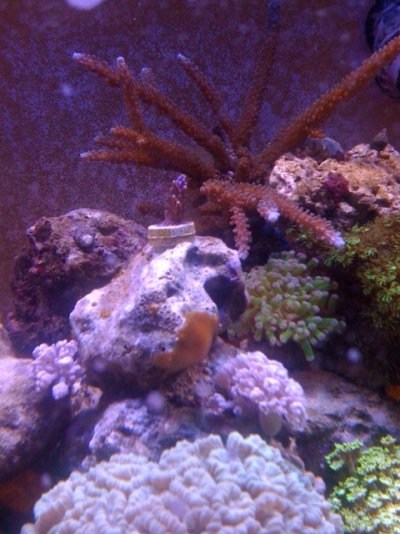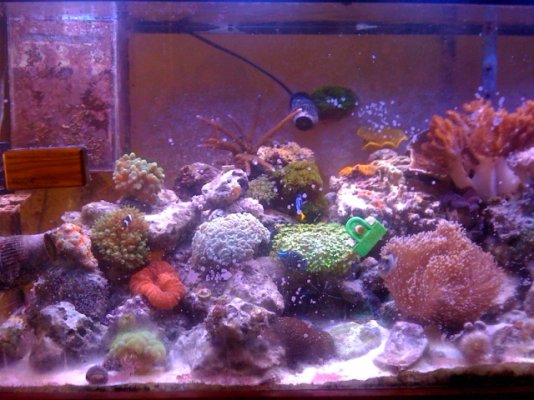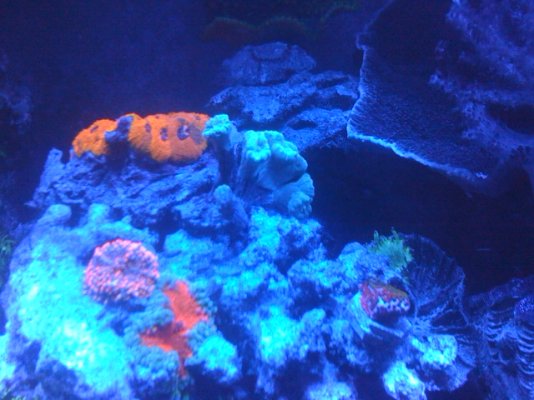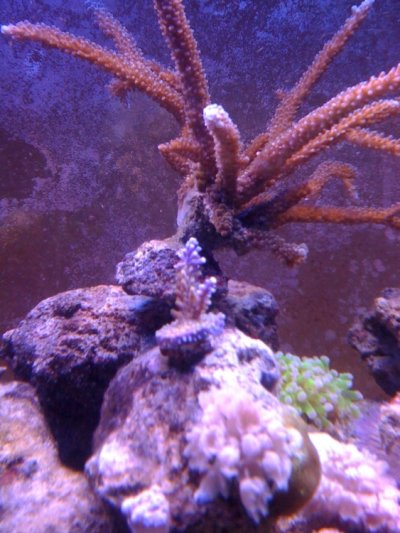Jaybird
Aquarium Advice FINatic
Just starting a topic here to keep a journal of my reef with the new lighting. I've given us a gift of four 48" Reefbrite LED lights for our 90G reef. The tank was previously lit with HO T5 (6-bulb fixture from Tek).
I will be watching the tank and reporting on progress with coral growth.
The key livestock that I will be watching are a GBT nem, two types of acro, pocillopora, and some montis. As well, I will be watching the LPS, shrooms and zoas. The key ones will be the higher-light livestock. Another factor will be watching for algae growth.
Once I get some photos of the current setup I'll add them. The thread will be a test for anyone else considering a full LED setup for their reef.
Each 48" Reefbrite strip is supposed to be equivalent to around two T5 bulbs. With 2 blue, one white, and one 50/50 strip I can say that it looks to have about as much light as the 6-bulb Tek fixture. That doesn't mean that the LEDs are less powerful. Just a visual observation.
So far, the colour with the two blues, 1 50/50 and one white seems a little blue. It looks really good, but some people may prefer two blues and two whites. The shimmer is really nice and the heat generated in the LEDs is almost zero. You could touch these things after 8 hours of on-time without a problem.
Initial feeling: the blue (actinic) lighting of the LEDs is mind-blowing. I've never seen my corals fluoresce so much. As well, the LEDs are similar to MH in the way that the light is very straight. It doesn't have the same "spread" as T5 bulbs, which may be why they seem only as bright as a 6-bulb fixture. So far the SPS have been extending their polyps.
I will be watching the tank and reporting on progress with coral growth.
The key livestock that I will be watching are a GBT nem, two types of acro, pocillopora, and some montis. As well, I will be watching the LPS, shrooms and zoas. The key ones will be the higher-light livestock. Another factor will be watching for algae growth.
Once I get some photos of the current setup I'll add them. The thread will be a test for anyone else considering a full LED setup for their reef.
Each 48" Reefbrite strip is supposed to be equivalent to around two T5 bulbs. With 2 blue, one white, and one 50/50 strip I can say that it looks to have about as much light as the 6-bulb Tek fixture. That doesn't mean that the LEDs are less powerful. Just a visual observation.
So far, the colour with the two blues, 1 50/50 and one white seems a little blue. It looks really good, but some people may prefer two blues and two whites. The shimmer is really nice and the heat generated in the LEDs is almost zero. You could touch these things after 8 hours of on-time without a problem.
Initial feeling: the blue (actinic) lighting of the LEDs is mind-blowing. I've never seen my corals fluoresce so much. As well, the LEDs are similar to MH in the way that the light is very straight. It doesn't have the same "spread" as T5 bulbs, which may be why they seem only as bright as a 6-bulb fixture. So far the SPS have been extending their polyps.




